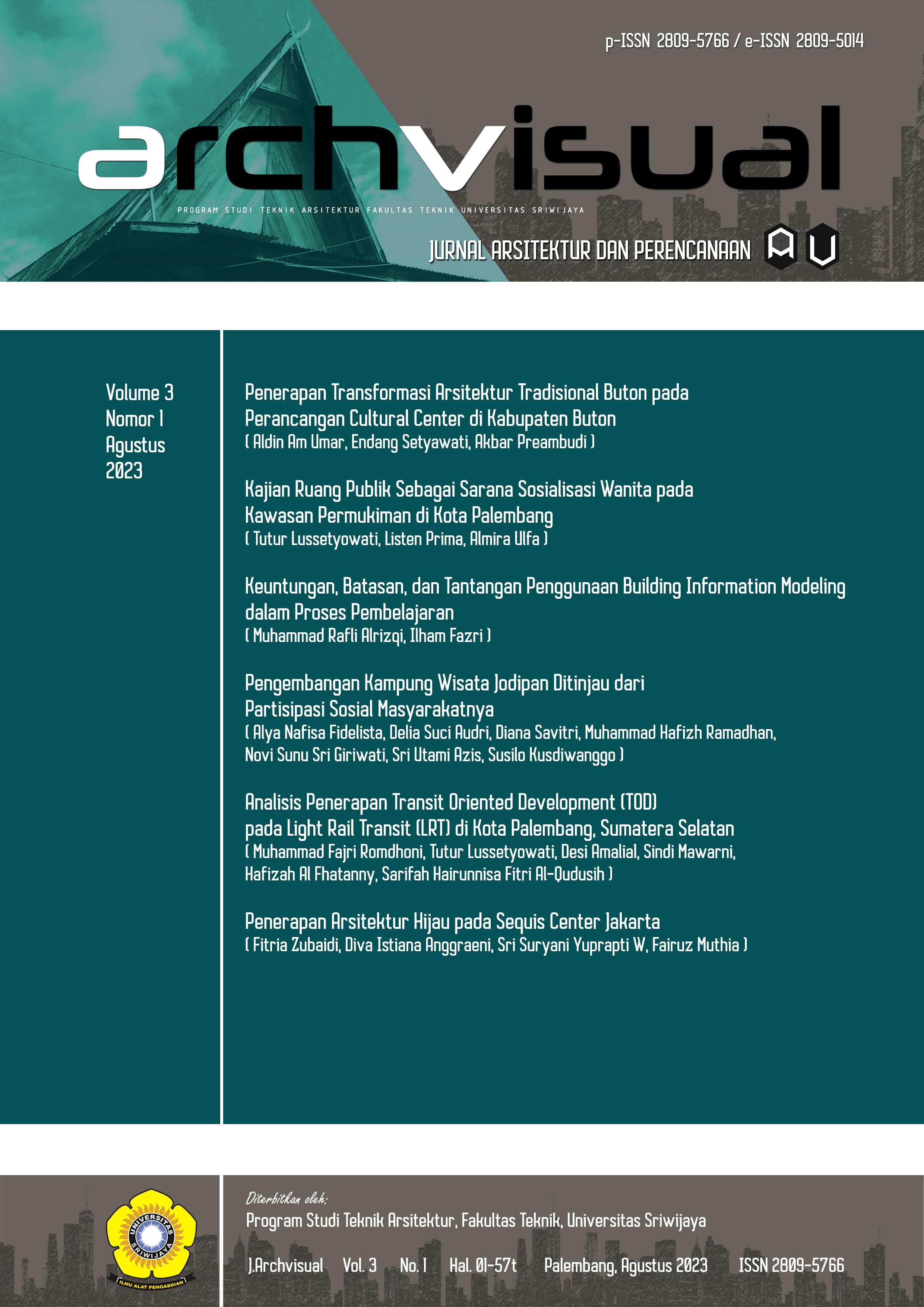Kajian Ruang Publik Sebagai Sarana Sosialisasi Wanita pada Kawasan Permukiman di Kota Palembang
Main Article Content
Abstract
Public space is a space where social and community activities take place. Public spaces will be a place of social interaction. The behavior of people in using public space will be different for each individual and community group. In residential areas, where women spend more time (especially those who don't work) around their home environment, they will use public spaces a lot as a means of socializing with other people. Focus of the study is to find out which public spaces are widely used by women around their neighborhoods and how they use these public spaces as a socialization place. The method uses mix methods that include case study method and field survey method. The results of this study indicate that the public spaces that are mostly used by women around their residential areas are neighborhood roads, markets, stalls, sports fields, and parks. The most usage of public space in residential areas is for necessary activities, such as: shopping; going to work; going to school, and social activities, such as: meeting and chatting with neighbors; and playing with children. Therefore, the output of this research would be a basis of further studied for effectiveness of open public for women.
Article Details
Section

This work is licensed under a Creative Commons Attribution-NonCommercial 4.0 International License.
How to Cite
References
Arsenault, M (2011). R. K. Yin (2012) Applications of Case Study Research. Thousand Oaks, CA: Sage. 231 pages. Canadian Journal of Program Evaluation, vol. 26, no. 2, pp. 104–107. https://doi.org/10.3138/cjpe.26.008
Carmona, ett al. (2003) Public Spaces – Urban Spaces, the dimension of urban design. Architectural press
Gehl, J (1987) Life Between Building, Using Public Space. Van Nostrand Reinhold, New York.
Hantono, D (2017) Pola Aktivitas Ruang Terbuka Publik pada Kawasan Taman Fatahillah Jakarta. Jurnal Arsitektur KOMPOSISI, vol. 11, no. 6, p. 265. https://doi.org/10.24002/jars.v11i6.1360
Hantono, D., & Pramitasari, D (2018) Aspek Perilaku Manusia sebagai Makhluk Individu Dan Sosial pada Ruang Terbuka Publik. Nature: National Academic Journal of Architecture, vol. 5, no. 2, p. 85. https://doi.org/10.24252/nature.v5i2a1
Morissan (2012) Metode Penelitian Survei. Kencana Prenada Media Group, Jakarta.
Sadeghi, A. R., Baghi, E. S. M. S., Shams, F., & Jangjoo, S (2023) Women in a safe and healthy urban environment: Environmental top priorities for the women’s presence in urban public spaces. BMC Women’s Health, vol. 23, no. 1, 163. https://doi.org/10.1186/s12905-023-02281-8
Shirvani, H (1985) Urban Design Process. Van Nostrand Reinhold, New York.
Weijs-Perrée, M., Dane, G., & Van Den Berg, P (2020) Analyzing the Relationships between Citizens’ Emotions and their Momentary Satisfaction in Urban Public Spaces. Sustainability, 12(19), 7921. https://doi.org/10.3390/su12197921
Yin, R. K (2014) Studi Kasus, Desain dan Metode. PT Raja Grafindo Persada, Jakarta.
Zhao, X., & Ji, Y (2018) The urban public space betterment and land use sustainability Under the human behavior. IOP Conference Series: Earth and Environmental Science, vol. 113, 012143. https://doi.org/10.1088/1755-1315/113/1/012143

